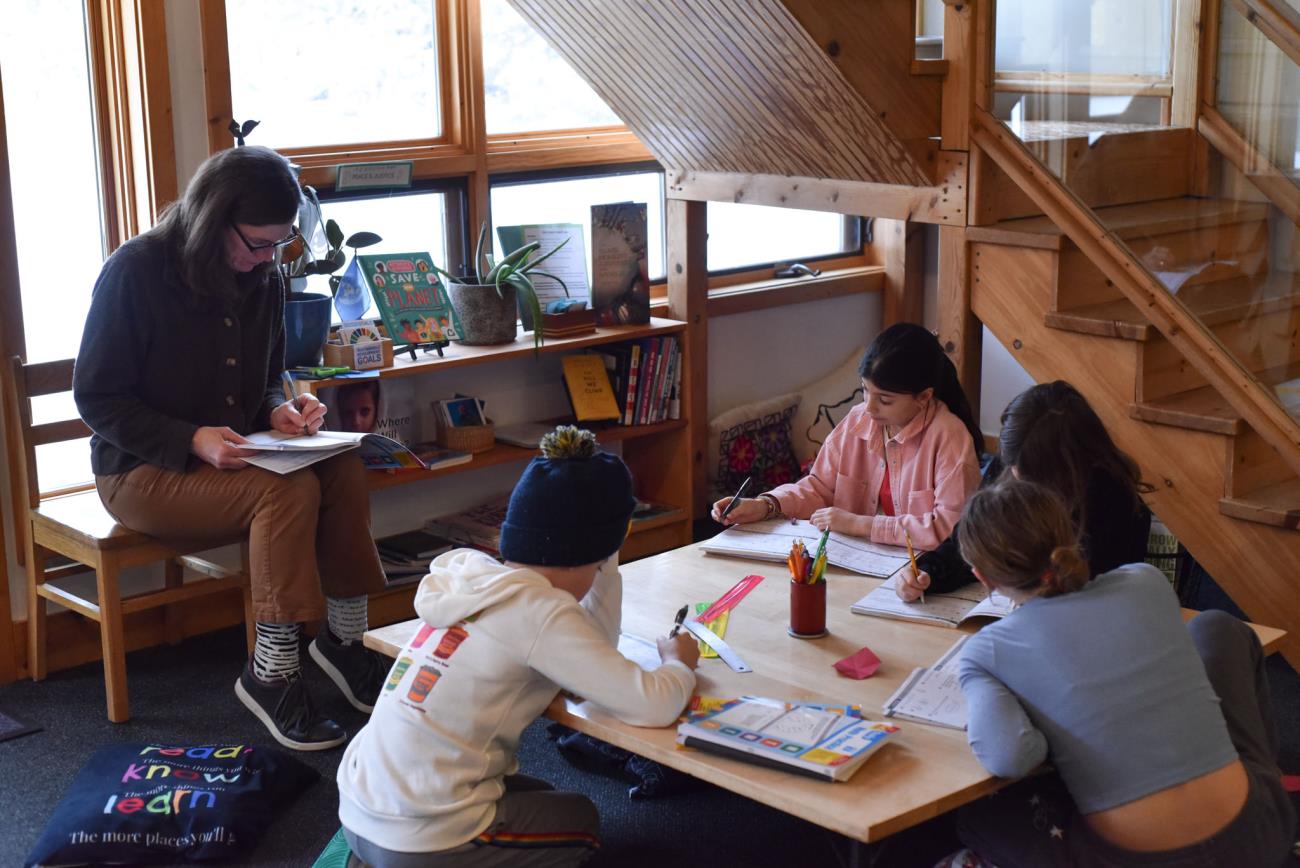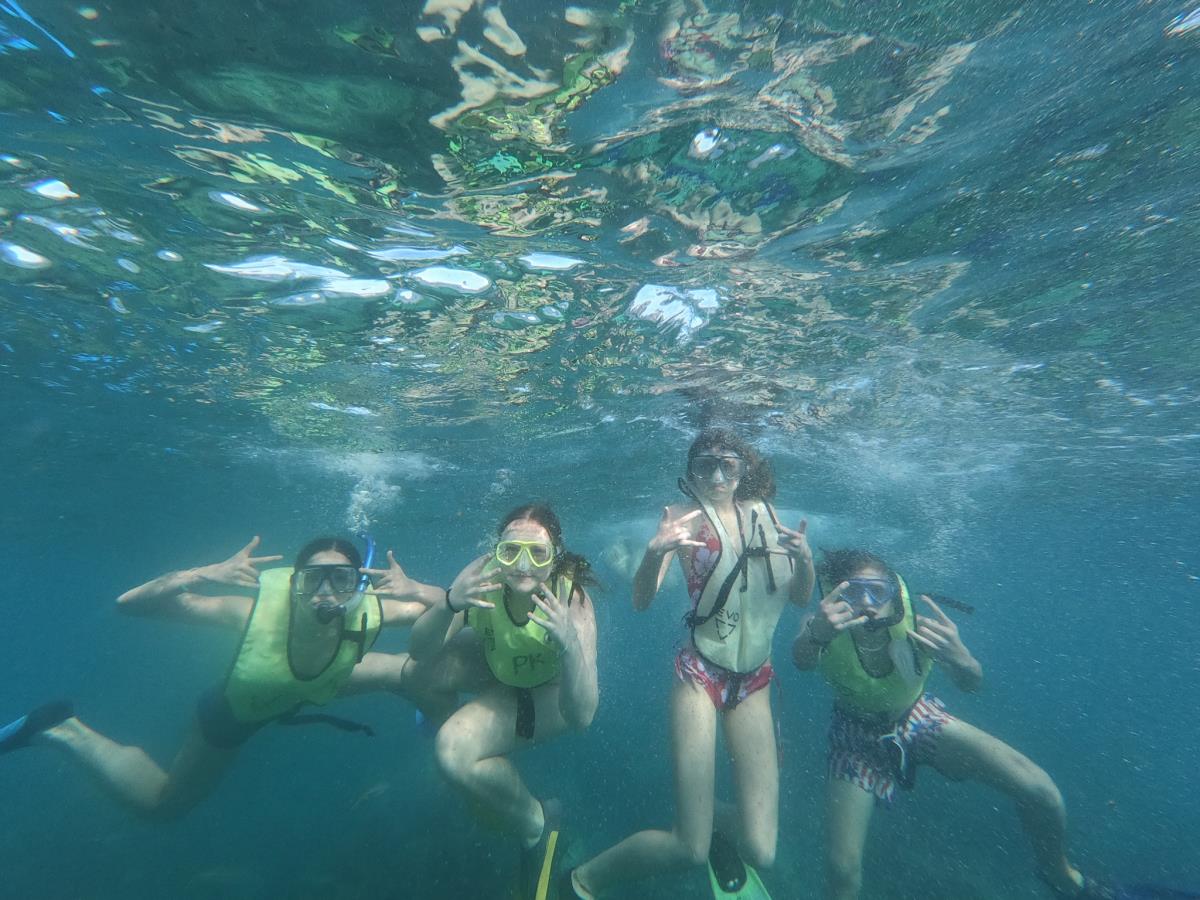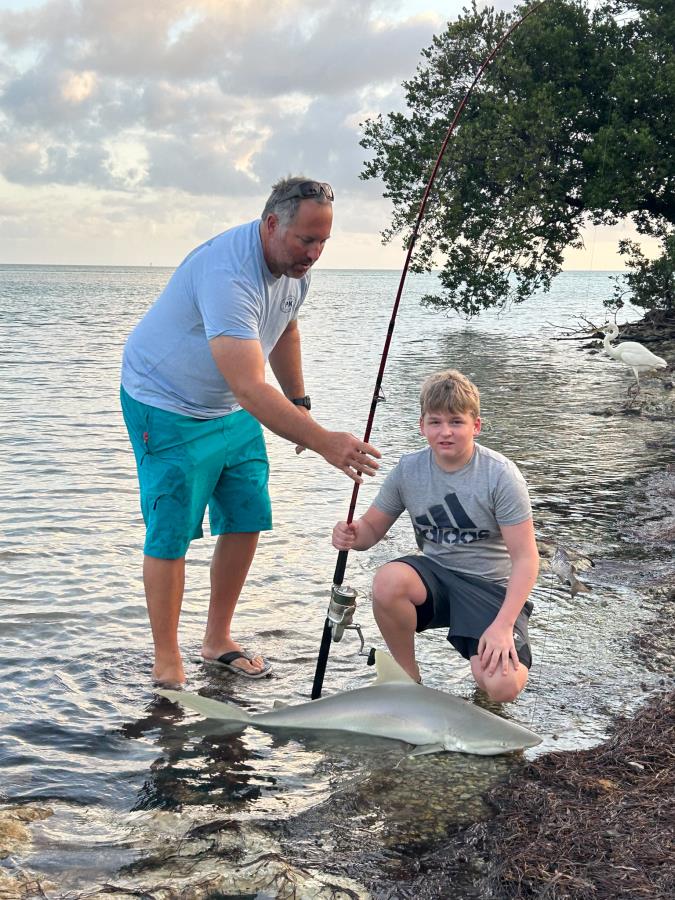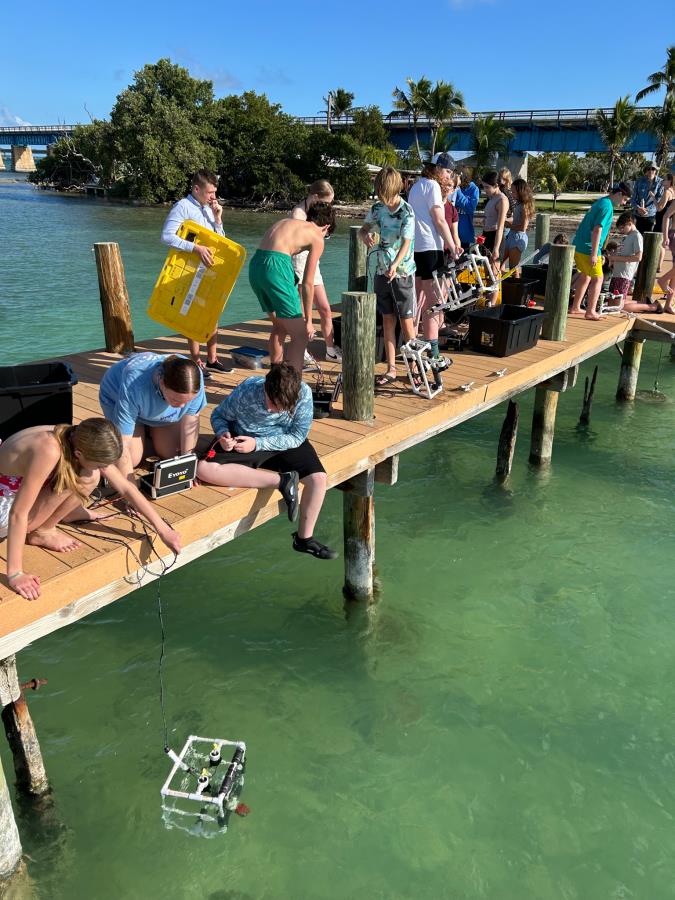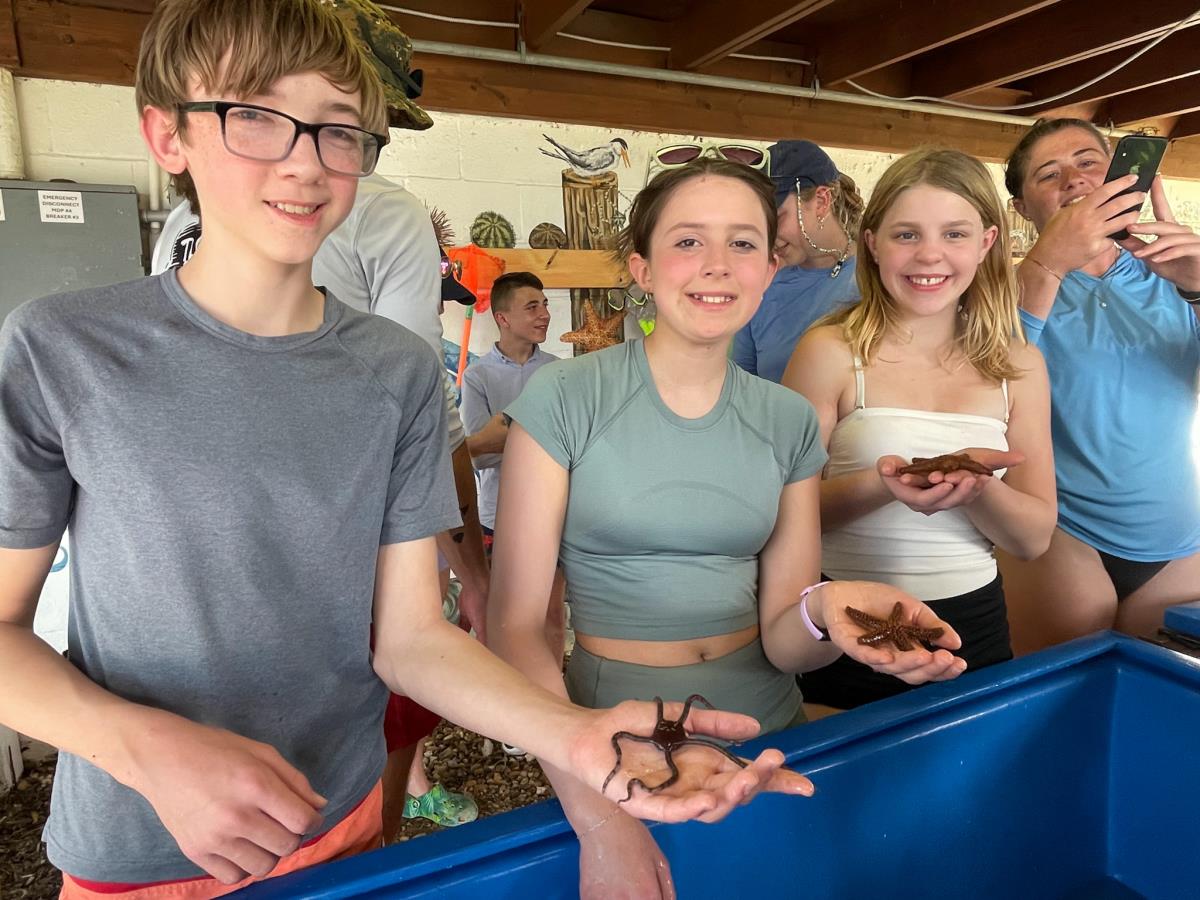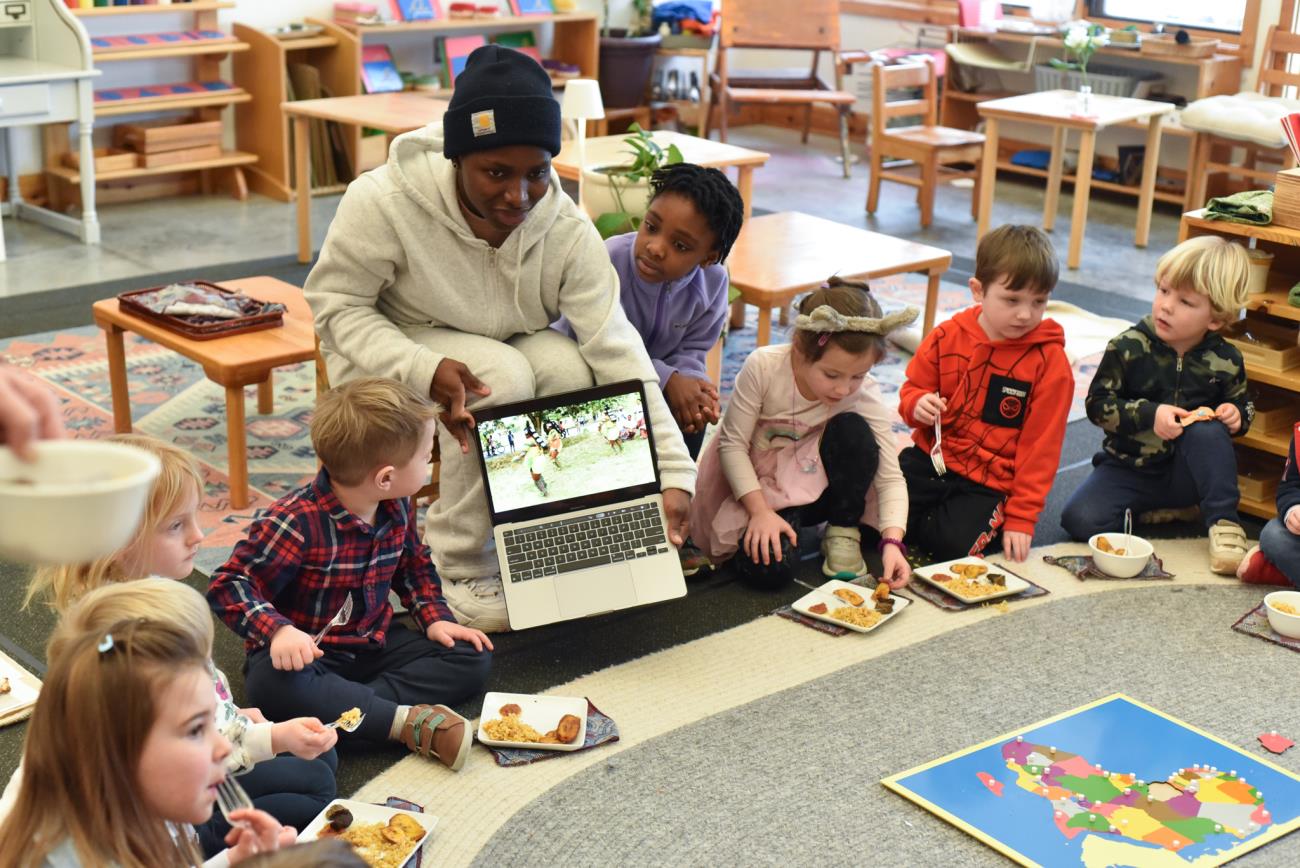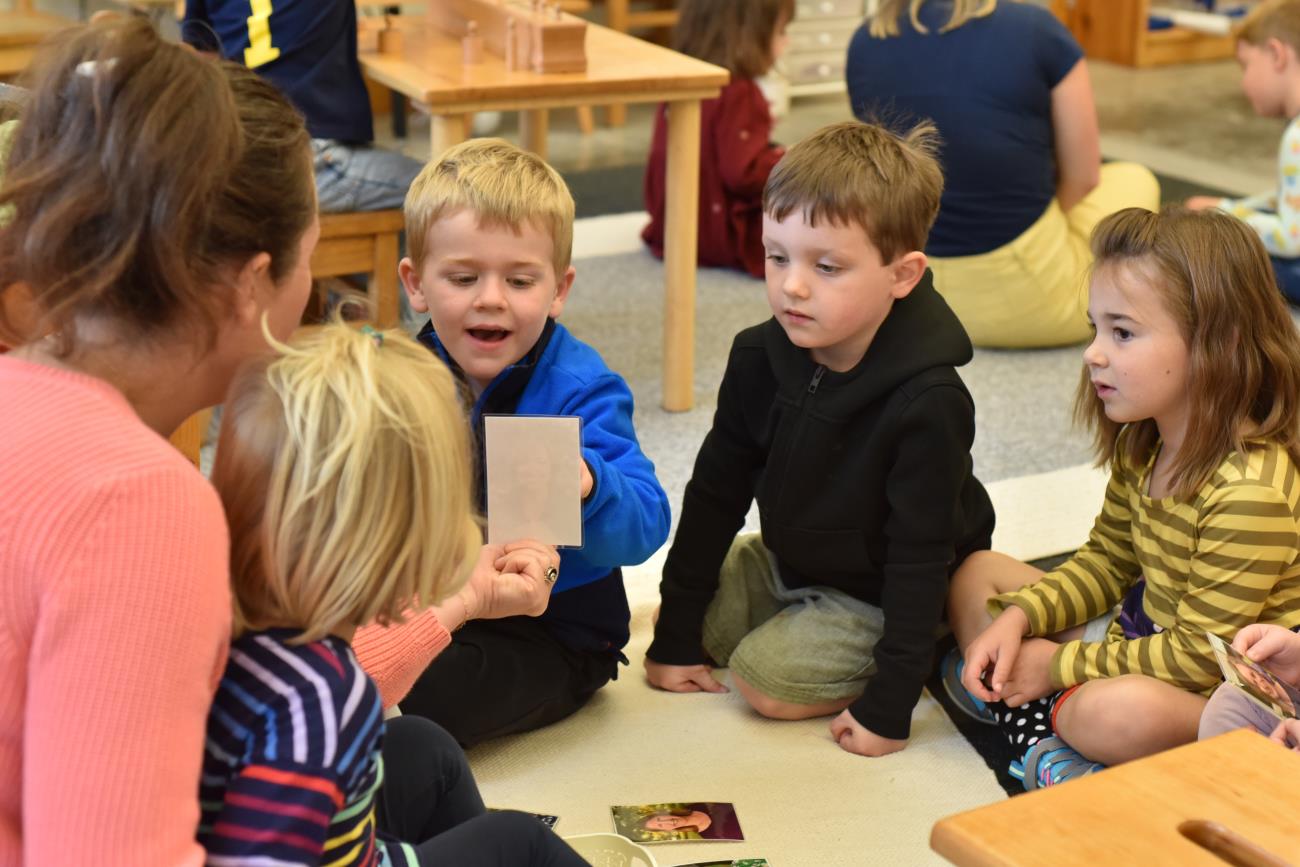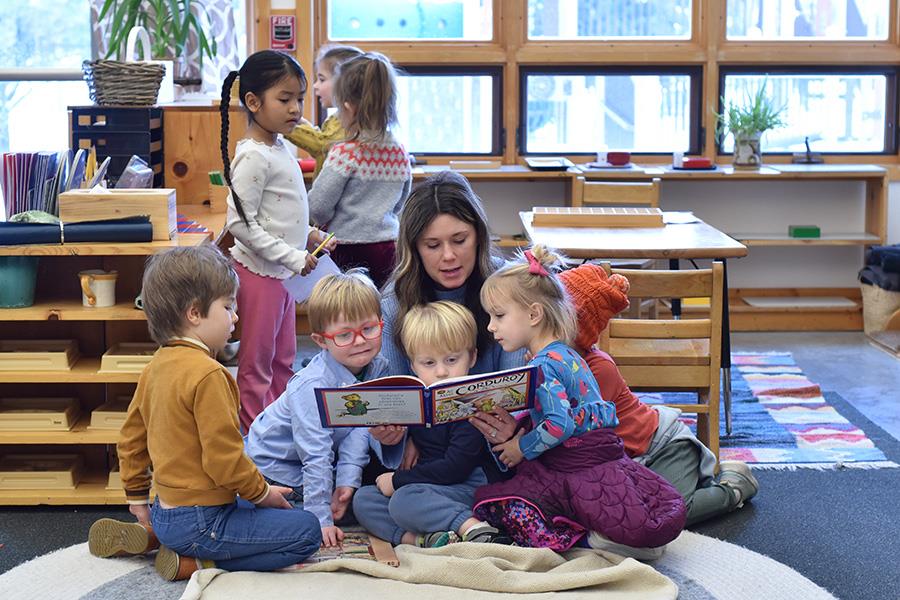When sharing with friends or relatives that your child attends a Montessori school, you may have fielded the question, “They get to do whatever they want, don’t they?” This misperception of the concept of freedom with responsibility also invokes a more traditional definition and expectation of what discipline looks like at school. Just as the children build their skills and individuality by choosing where to work, with whom to work, and what work to focus on at a given moment within the parameters of their abilities, they are also expanding these freedoms as they develop the discipline envisioned by Dr. Maria Montessori in The Discovery of the Child, p. 51
“In our system, we obviously have a different concept of discipline. The discipline we are looking for is active. We do not believe that one is disciplined only when he is artificially made as silent . . . Such a one is not disciplined but annihilated. We claim that an individual is disciplined when he is the master of himself and when he can, as a consequence, control himself when he must follow a rule of life.”
From the youngest learners in Nido to the eldest at Compass Montessori Junior High, these individuals are on the path to reaching their potential as a contributing member of our world. The adults guide this growth by ensuring that the support provided serves as an “aid to life.” The infants explore their environment, gaining greater skills and awareness of their abilities and how to put them to use. In YCC, the young learners continue to develop their physical and cognitive skills as part of a community. They practice taking care of themselves and others, putting clothes on, preparing food, and pouring water. They ask you to “help them to help themselves.” This path logically leads to the primary child setting the table for lunch, beautifying the environment, and caring for the younger learners in their community. The patience developed by primary children observing the careful formation of a letter by the adult strengthens their discipline, which is further nurtured by their careful repetition of the lessons given until they are satisfied with their skills and are ready to move on.
In keeping with the changing developmental characteristics of elementary children, the adult continues to provide opportunities for them to develop self-discipline in a safe and predictable environment. Their freedoms grow exponentially as they exhibit the ability to properly handle the commensurate responsibility. They have worked together to create a classroom agreement that sets the expectations for themselves and others, thus acknowledging the reason for and necessity of having and following rules. These agreements serve as an anchor for the children when they venture outside of the classroom and interact with the greater community. The learners choose what research to pursue, contact resources outside of the school community, and organize outings to enrich their learning. These real world experiences develop social, organizational, and time management skills: skills necessary for them to develop self-discipline.
With this foundation in place, the junior high student continues to build these essential skills, taking on greater responsibilities for their learning and their community’s well-being. They are the keepers of their learning, which involves researching, planning, and implementing their trips abroad. They draw on their years of grace and courtesy lessons and practice and apply these principles to peer conflict resolution based on a foundation of equity and justice. They continue to practice their skills of self-discipline in a safe and predictable environment that they helped establish.
Mistakes will be made and are an essential part of the development of an individual’s moral compass and self-discipline. In contrast to the Oxford Languages definition of discipline as, “the practice of training people to obey rules or a code of behavior, using punishment to correct disobedience,” Montessori provides an opportunity for reflection and growth when mistakes occur while preserving the dignity of those involved. The “active” approach to discipline posited by Dr. Montessori takes the development of the whole child into consideration. It allows for, rather welcomes, those inevitable mistakes that come from being human. The learners (adults included) who make the mistakes learn to be accountable for their actions and repair what has been damaged. From the youngest age, children are engaged in lessons of grace and courtesy and social and emotional awareness, so that when they make a mistake, they understand why they need to take responsibility for their actions.
So, after you respond to your friend or relative that your child’s freedom at school is balanced with great responsibility that allows for your child to develop into the kind, loving, curious, contributing member of our world that they are meant to be, please invite them to come observe the development of self-discipline in action.
During the workshop, Applied Technology, we got the opportunity to travel to Pigeon Key and South Florida. The project we had to complete was fully submerging our team's ROV underwater and “flying” to the other side of the dock. The seven teams raced to see who could achieve the mission the fastest.
During this wonderful trip, we got to experience many different things. We enjoyed watching the Super Bowl, snorkeling in a beautiful reef, and waking up early for shark fishing. The first night we got to Florida, we drove down a beautiful road to our Airbnb while blasting “Miami” by Will Smith and sharing many laughs. As soon as we arrived at our house, we unpacked and enjoyed each other's company. The highlight of many people’s day was enjoying the one and only Super Bowl.
On day two, we enjoyed a slow morning that consisted of many fun conversations and delicious bagels. We then hit the road to Pigeon Key. After a long trek and enjoying looking out at the beautiful blue water, we arrived at the island. We loaded on a train and were greeted by a set of wonderful counselors. We explored the island and swam in the water. We all had a wonderful dinner and headed to enjoy a night of sleep.
While on the island we learned so much about the biology of fish and how to tell one from another. After all of our learning, we got to go out and snorkel at a beautiful reef which was by a lighthouse. The lighthouse used to be the tallest iron structure in the world until the Eiffel Tower was constructed. When we arrived at the lighthouse we jumped into the crystal clear water and explored the coral and thousands of fish. As soon as we got all the salt water out of our lungs, we headed back to camp. After all of our marine learning, we got to enjoy some downtime. We then had our ROV competition. As soon as the star of the show was over, we headed to the beach for the tide pools and snorkeling. We got to look at many cool invertebrates like starfish, jellyfish, octopus, and many animals we’ve never heard of. We also explored the biology of sharks. We learned how to detect sharks and how to keep them safe. We even got the chance to dissect a lemon shark as well as feed a nurse shark.
On the last day of Pigeon Key, we woke up bright and early for an hour of fishing at sunrise. We caught a variety of fish like a trumpet fish and even a black nose shark. After the amazing sunrise and slimy fishing, we enjoyed breakfast, packed up, and left our beloved island. We drove a tedious three hours on a long highway while blasting wonderful music and soaking in the colorful environment. Before heading to our house, we stopped at Sharky's Shark Bite Grill. Don’t worry, no sharks were harmed while dining. Soon after lunch, we explored the Florida Everglades. We took a short walk around the never-ending grassy Florida Everglades. We got to see many alligators, fish, and a variety of birds. That was a memory many people will never forget. I hope I can visit again soon. After our hike, we drove over to Robert is Here Fruit Stand. This fruit stand had every fruit you could imagine, including starfruit, mango, jackfruit, and many many more. Not only did we enjoy tropical fruit, but we got to hang out with cows, turtles, emus, and goats. After visiting Robert, we drove to our last place. When we arrived, we all got settled and enjoyed the last night of the trip with some pizza.
The last morning of the trip was bittersweet. We enjoyed the last drops of warmth at a local beach and park. We all shared many laughs and stories then loaded up to head back home.
Thank you to Tree, Kristina, Tori, and Brian for taking us on this wonderful adventure! And, a big thank you to the school for making this learning experience possible! Thank you!
“The needs of mankind are universal. Our means of meeting them create the richness and diversity of the planet. The Montessori child should come to relish the texture of that diversity”
- Maria Montessori
Maria Montessori was the ultimate advocate for peace education. She created a method that allowed all children to access their full potential, regardless of ability, background or learning style. She was a champion for diversity and knew our differences added opportunities, not setbacks. However, claiming that Montessori schools celebrate diversity by default of Montessori’s life work is a mistake. Classrooms that appropriately celebrate diversity require intentional teachers and purposefully tailored instruction. These are the top three ways we do this at The Children’s House:
-
Offer windows and mirrors. Windows offer insights into other people’s perspectives. Mirrors offer reflections of our own experiences. Every learner needs both to develop a full picture of the world.
Example: We include books, stories, music and art that represent our learners gender, race, family structure, physical ability and socioeconomic status. We also make sure to include media that highlights those not represented in our community. Classrooms make sure the library corner reflects the world at all times. When we are studying perspectives of those not in our community, we use primary sources and consult experts.
-
Affirm learners’ unique identities. We support learners to have a positive connection with the characteristics that make them special. This starts by getting to know our learners through careful observation.
Example: We do this by celebrating each other’s characteristics through art, like drawing portraits and mixing paint to create our unique skin tones. We are also intentional about sharing compliments with each other regularly.
-
Create a culture of curiosity. We encourage learners to ask questions and model seeking to understand. Young children have a natural desire to put information into categories. Questions help them make sense of the world around them without making assumptions.
Example: We model using phrases like “I wonder what pronouns our new learner uses” or “I can’t wait to learn more about which holidays your family celebrates”.
It is important to learn about people different from ourselves. Seeking to understand promotes empathy, perspective, and reflection. Learning about others often requires seeking out experts in our community. It also requires noticing the diversity already around us. Our staff is committed to cultivating an environment where everyone feels welcome and celebrates what makes each learner themselves.
Our Commitment to Diversity, Equity, Inclusion, and Belonging
Forever inspired by the wisdom of Dr. Maria Montessori, The Children’s House and Compass Montessori Junior High cultivate a learning community where we aim for everyone to feel safe, welcome, and included, and wherein all people are empowered to explore the richness and diversity of humanity, and in doing so discover who they are, where they come from, and how they wish to contribute to our ever-changing world.
